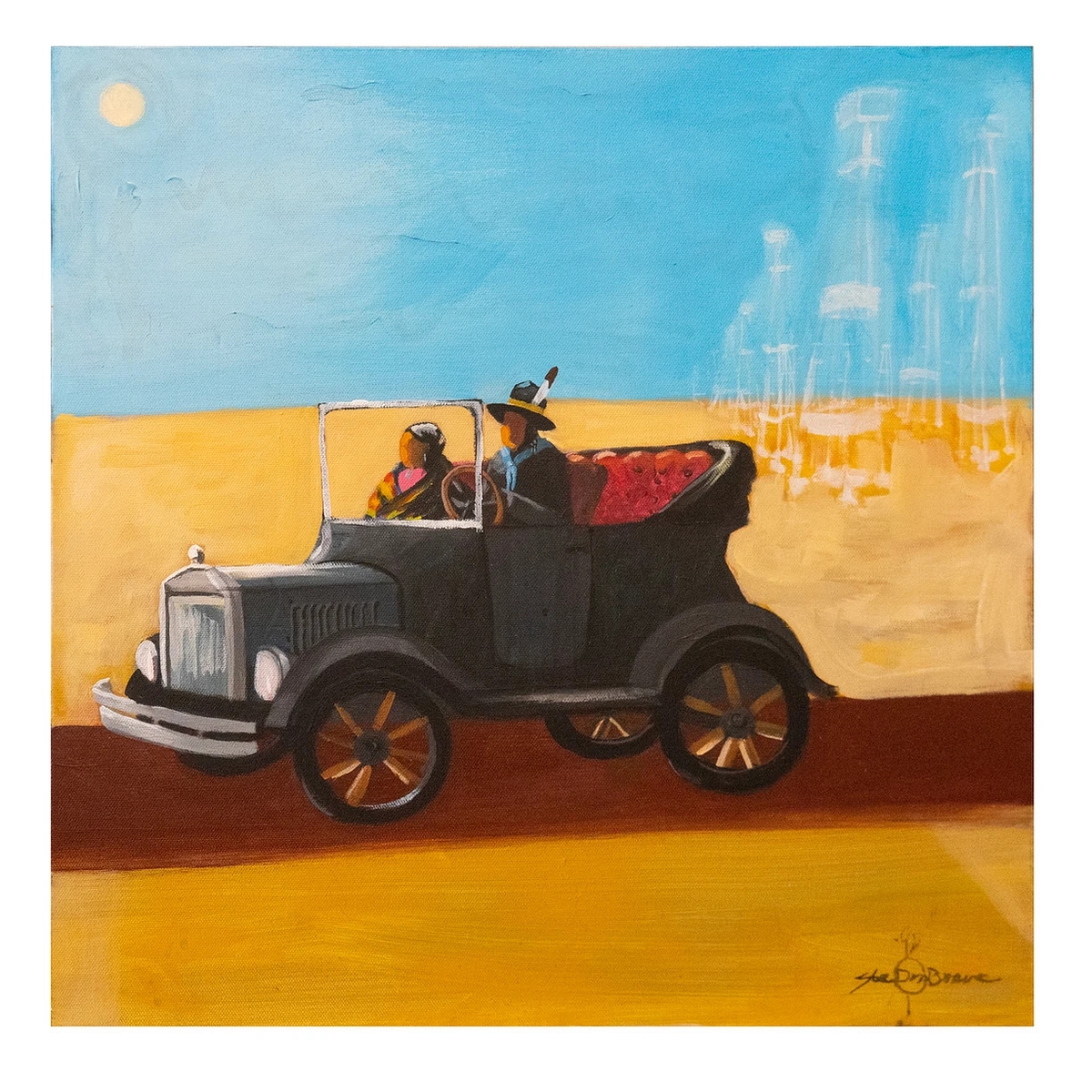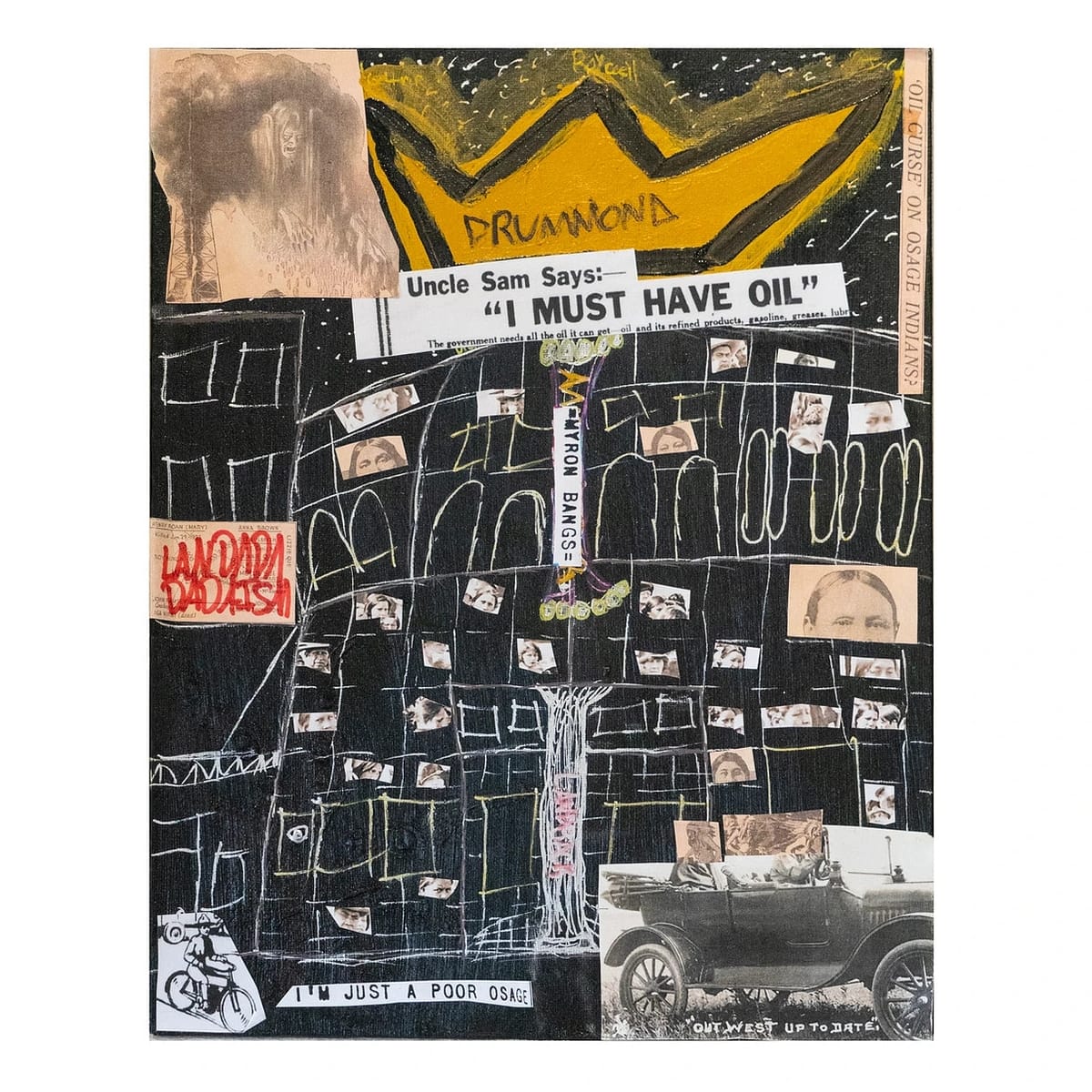Flower Moon Art Show
Tulsa Artists’ Coalition
Oct. 6 – 28, 2023
Oil was discovered on Osage lands in northeastern Oklahoma in the early 1900s, and it wasn’t long after the tribe began prospering that local whites started to conspire against them. Between 1918 and 1931, at least 60 Osage people died under suspicious circumstances. For the tribe, the twenties became known as the Reign of Terror.
To honor the lives lost during the Reign of Terror, 15 artists — Andrew Anderson, Kati Berg, Joe Don Brave, Joe Cheshewalla, Alex DeRoin, Welana Queton/Anita Fields, Nicole Foster, Jeremy Good Voice, Christine Iron, Evie Kenworthy, Jerry Logsdon, Jaime Misenheimer, Cara Jade Myers, Rachel Purget, Katie Sanders Walker — gathered to present Flower Moon Art Show in Tulsa Artists’ Coalition (TAC)’s physical and virtual galleries. These artists met while working as background actors and crew on the set of Martin Scorsese’s 2023 film Killers of the Flower Moon, a Western crime drama about the historic tragedy.
Among the paintings, drawings, sculptures, new media works, and traditional crafts on view, a significant number of works feature oil as a signifier both of settler-colonial greed and of Native power and autonomy. For example, in Kati Berg’s acrylic painting Osage Sunrise, a swirling red sky backlights a tall and menacing oil derrick, while Rachel Purget’s acrylic painting Oil + Blood Ripple shows footprints on slick dark ground that send viscous red waves out toward the edges of the narrow canvas.
Wolves Den, a mixed media work by Alex DeRoin, fuses text and image to highlight disparities in power and perception in historical archives. Featuring prominently in the center of the canvas is a news clipping that reads, “Uncle Sam Says: ‘I MUST HAVE OIL.’” Juxtaposed at the bottom of the canvas is a line of letters that spell, “I’m just a poor Osage.”
Meanwhile, Cara Jade Myers, the artist behind the mixed media work Death & Oil, stained, dripped, and flicked acrylic paint on the frontispiece of journalist David Grann’s 2017 murder-mystery Killers of the Flower Moon, upon which Scorsese’s film is based. Myers’ intervention reminds viewers that books and films are merely mediated representations of real conflicts that affected real people — and not to take their source material for granted.

Death and oil seem nearly synonymous in Flower Moon Art Show, until one looks closely at Joe Don Brave’s Sunday Drive, an acrylic painting imbued with the spirit of Native power and self-determination. Here, two Osage members drive a Ford Model T through an expanse of golden land. In the background, oil derricks reminiscent of Berg’s but this time rendered in ghostly white stand sentry over the Native figures, who drive with the warm sun on their faces.
Like history itself, oil functions as both a presence and an absence in Flower Moon Art Show, ultimately becoming a complex symbol of the Osage Nation’s resilience in the face of erasure. The show’s cathartic and reparative spirit calls to mind the idiom “to pour oil on troubled waters,” which means to mend a difficult situation. By offering Tulsa a chance to mend, to celebrate, and to reflect upon history, the show also reminds us that the fight for Native recognition and restitution is just beginning.
Next at Tulsa Artists’ Coalition: Decimation






